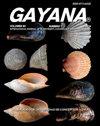月亮翻车鱼(双鱼座:Molidae)的寄生虫。智利中南部海岸的首次记录
IF 0.2
4区 生物学
Q4 ZOOLOGY
引用次数: 5
摘要
在这项研究中,我们报告了2014年10月在智利中南部Tome捕获的一只翻月鱼标本的寄生虫学发现。分离出了大子叶棘足目、蛇形棘足目和大子叶棘足目、小头棘足目和桡足目天龙目成虫。此外,在幼虫期还观察到ⅰ型异尖线虫(Anisakis sp. Type, 1961)的第三幼虫期(L3)和恐怖毛线虫(Molicola horridus)的plerocerci幼虫。结果表明,在本研究中发现的不同寄生虫的生命周期中,mola作为最终宿主和中间宿主或副宿主参与。本文章由计算机程序翻译,如有差异,请以英文原文为准。
Parásitos del pez luna Mola mola (Pisces: Molidae). Primer registro en aguas de la costa centro sur de Chile
In this study, we report parasitological findings in one Mola mola specimen examined and collected as by catch-off Tome, south central Chile, during october 2014. Adult stages of digeneans, Accacladium serpentulum and Accacladocoelium macrocotyle, cestode Anchistrocephalus microcephalus, and copepod Cecrops latreillii were isolated. Besides, at the larval stage, the third larval stage (L3) of nematode Anisakis sp. Type I, sensu Berland, 1961, and plerocerci larvae of cestode Molicola horridus were also observed. The results demonstrated the participation of M. mola as a definitive and intermediate or paratenic host in the life cycles of different parasites identified in the present study.
求助全文
通过发布文献求助,成功后即可免费获取论文全文。
去求助
来源期刊

GAYANA
Agricultural and Biological Sciences-Aquatic Science
CiteScore
0.60
自引率
0.00%
发文量
5
期刊介绍:
GAYANA is a scientific journal published by Universidad de Concepción, Chile. It is the modern version of Gayana Oceanología and Gayana Zoología. Therefore its numeration starts at volume 63(1).
GAYANA covers all aspects of zoology and oceanographic research. It is structured in five sections, defined by subject or discipline: Ecology, Biodiversity and Taxonomy, Earth Sciences, Evolutionary, and Applied Biology and Environmental Biology. Each section is in charge of an editor who receives and manages the manuscripts sent for evaluation in close collaboration with the editorial board.
 求助内容:
求助内容: 应助结果提醒方式:
应助结果提醒方式:


